The Spring Framework is a powerful, open-source framework designed to simplify Java application development.
It’s widely used for building everything from small web apps to large enterprise systems, and mastering it opens doors to numerous career opportunities in Java development.
By learning Spring, you’ll be able to leverage its features for dependency injection, aspect-oriented programming, and data access, making your code cleaner, more testable, and easier to maintain.
You’ll also be well-equipped to build robust and scalable applications that meet the demands of modern software development.
Finding the perfect Java Spring course on Udemy can feel like navigating a maze.
With so many courses to choose from, it’s hard to know which one will truly give you the skills you need.
You’re looking for a course that balances theory with hands-on practice, led by an experienced instructor who can make complex concepts clear and engaging.
For the best Java Spring course overall on Udemy, we recommend Spring Framework Master Class - Java Spring the Modern Way.
This comprehensive course dives deep into the core concepts of Spring, providing a solid foundation from dependency injection to aspect-oriented programming.
Its hands-on approach and clear explanations make it an excellent choice for learners of all levels.
While Spring Framework Master Class - Java Spring the Modern Way stands out as our top pick, we’ve also compiled a list of other excellent Udemy courses tailored to different learning styles and specific Spring-related skills you might want to focus on.
Keep reading to find the perfect Java Spring course to elevate your development career.
Spring Framework Master Class - Java Spring the Modern Way
You’ll start with a gentle introduction to the Spring Framework, quickly moving into hands-on project setup using Spring Initializr.
You’ll grasp core concepts like dependency injection with @Component and @Autowired, understanding how Spring manages dependencies behind the scenes.
A practical example using the binary search algorithm clarifies tight versus loose coupling, solidifying your understanding.
You’ll explore dependency injection further with constructor and setter methods, and discover why Spring is so popular among Java developers.
You’ll then dive deeper, mastering autowiring with @Qualifier and @Primary, and understanding different bean scopes like singleton and prototype.
You’ll even tackle complex scenarios mixing these scopes.
The course guides you through the bean lifecycle with @PostConstruct and @PreDestroy, and introduces Contexts and Dependency Injection (CDI) with @Named and @Inject.
You’ll learn how to define the Spring Application Context using XML and compare it with component scanning, differentiating between crucial annotations like @Component, @Service, @Repository, and @Controller.
You’ll also learn how to read external property files, adding flexibility to your applications.
Next, you’ll become proficient in unit testing with JUnit and Mockito.
You’ll use Mockito’s @Mock and @InjectMocks to create robust tests, ensuring your code works as expected.
The course then covers Spring Boot, showing you how to build and deploy applications efficiently.
You’ll learn about auto-configuration, Spring Boot DevTools, and how to make your application production-ready using profiles, ConfigurationProperties, embedded servers, and the Actuator.
You’ll also understand the distinctions between Spring Boot, Spring, and Spring MVC.
Finally, you’ll explore advanced topics like Spring AOP (Aspect-Oriented Programming).
You’ll use annotations like @Before, @After, @Around to add logging and other cross-cutting concerns.
You’ll also learn to interact with databases using Spring JDBC, JPA, Hibernate, and Spring Data, working with H2 database and JPQL.
You’ll even build a web application using Spring MVC, handling requests and integrating with Tomcat and Log4j.
Throughout, you’ll use tools like Maven, Gradle, and Eclipse, becoming comfortable with the entire Spring ecosystem.
The course even helps you troubleshoot common issues with SLF4J and Logback.
Java Spring Framework 6 with Spring Boot 3
The course starts with a solid foundation in Java, covering essentials like variables, data types, operators, loops, and object-oriented programming concepts.
This ensures that you have a strong grasp of the language before diving into the Spring Framework.
Once you’ve mastered the Java fundamentals, the course introduces you to the Spring Framework and Spring Boot.
You’ll learn about the core principles of Spring, such as Inversion of Control (IoC) and Dependency Injection (DI), and how they simplify application development.
The course also covers various Spring modules, including Spring MVC for web development, Spring Data JPA for database integration, and Spring Security for securing your applications.
One of the standout features of this course is its practical approach.
You’ll work on several projects throughout the course, allowing you to apply what you’ve learned in real-world scenarios.
For instance, you’ll build a job application web app, a quiz app using microservices, and even explore data structures and algorithms (DSA) concepts.
The course also covers advanced topics like Spring AOP (Aspect-Oriented Programming), Docker containerization, and microservices architecture.
These topics are essential for building scalable, maintainable, and robust applications in modern software development.
Throughout the course, you’ll gain hands-on experience with popular tools and technologies like Maven, PostgreSQL, MySQL, React, and Postman.
The instructor provides clear explanations and practical examples, making it easier to understand and apply the concepts.
One notable aspect of this course is its emphasis on staying up-to-date with the latest versions of Spring Framework and Spring Boot.
By covering Spring Framework 6 and Spring Boot 3, you’ll be learning the most recent features and best practices, ensuring that your skills are relevant and in demand.
Learn Spring Boot 3 in 100 Steps - No 1 Java Framework
The course starts with an introduction to Spring Boot, covering its goals and how it simplifies Java development.
You’ll learn about Spring Boot’s magic - starter projects and auto-configuration - which make development faster and more efficient.
Next, you’ll dive into building a web application with Spring Boot.
You’ll create a Spring MVC controller, work with JSPs, handle query parameters, and integrate with databases like H2 and MySQL.
The course also covers essential topics like logging, Bootstrap CSS framework integration, and Spring Security setup.
Moving on, you’ll learn about unit testing with JUnit and mocking with Mockito, which are crucial for writing robust code.
The course also provides an introduction to build tools like Maven and Gradle, helping you understand project setup and management.
One of the highlights is the in-depth section on building a REST API with Spring Boot.
You’ll learn about REST principles, create APIs for handling surveys and questions, integrate with a database using Spring Data JPA, and write integration and unit tests for the APIs.
Spring Security is also covered for securing the REST APIs.
Additionally, the course includes appendices that introduce you to the Spring Framework, JPA with Spring Boot, and functional programming in Java - valuable topics for any Java developer.
Throughout the course, you’ll find hands-on coding exercises, step-by-step guides, and best practices for writing clean, maintainable code.
The instructor’s clear explanations and real-world examples make it easy to understand and apply the concepts.
Master Java Web Services and REST API with Spring Boot
The course starts with an introduction to web services, covering key concepts like SOAP and RESTful services, their differences, and important terminology.
This lays a solid foundation for the rest of the course.
Next, you’ll dive into the Spring Framework, learning about its core concepts like dependency injection, loose coupling, and exploring different modules and projects.
This section provides a comprehensive understanding of the framework before moving on to Spring Boot.
The Spring Boot section is extensive, covering everything from setting up a new project to understanding auto-configuration, starter projects, and production-ready features like profiles, embedded servers, and actuators.
You’ll also learn how to build faster with DevTools and the differences between Spring Boot, Spring, and Spring MVC.
The course then covers build tools like Maven and Gradle, giving you hands-on experience with creating and managing Spring Boot projects using these tools.
Moving on, you’ll learn to build SOAP web services using a contract-first approach, including defining XML schemas, configuring endpoints, and implementing security with WS-Security.
This section also covers JAXB and working with WSDL files.
The RESTful web services section is comprehensive, starting with creating a basic REST API and then covering advanced topics like exception handling, validations, content negotiation, versioning, HATEOAS, filtering, and monitoring with actuators.
You’ll also learn about Open API specification and auto-generating Swagger documentation.
The course then dives into JPA and Hibernate, teaching you how to connect your RESTful web service to databases like H2 and MySQL.
You’ll learn about Spring Data JPA, querying data, and implementing authentication with Spring Security.
Additionally, the course covers best practices for RESTful web services, including the Richardson Maturity Model.
As a bonus, there’s an introduction to functional programming in Java, covering concepts like streams, filters, lambdas, and the Optional class.
Throughout the course, you’ll work on hands-on exercises and projects, reinforcing the concepts you’ve learned.
The instructor provides code backups and step-by-step changes for reference.
Full Stack: Angular and Java Spring Boot E-Commerce Website
This course covers building a full-stack e-commerce application from scratch using Angular for the front-end and Spring Boot for the back-end.
It starts with crash courses on TypeScript and Angular fundamentals, ensuring you have a solid foundation.
You’ll learn how to set up development tools, create components, integrate Bootstrap CSS, and handle conditionals and formatting in Angular.
Moving on, you’ll dive into developing the Spring Boot back-end, covering JPA entities, REST APIs, and database integration.
The course guides you through building the Angular front-end, including features like product listing, searching, pagination, and shopping cart functionality.
As you progress, you’ll integrate an online shop template, add support for categories and keyword searches, and implement a master-detail view for products.
The course also covers crucial aspects like checkout form validation, saving orders to the database, and securing the application with authentication and authorization using Okta.
Additionally, you’ll learn how to handle browser refreshes, refactor the codebase, implement order history, secure communication with HTTPS, configure environments in Angular, and integrate credit card payment processing with Stripe.
The instructor provides clear explanations, coding examples, and hands-on exercises to reinforce the concepts.
You’ll have access to the source code and PDF files for reference.
Go Java Full Stack with Spring Boot and Angular
You’ll start by gaining a solid understanding of JavaScript, TypeScript, and Angular, the popular front-end framework.
The course walks you through creating an Angular application from scratch, exploring its components, data binding, routing, and more.
Moving on, you’ll dive into the world of RESTful web services and learn how to design and implement them using Spring Boot.
You’ll build REST APIs, connect them to the Angular front-end, and integrate features like basic authentication and JSON Web Tokens (JWT) for secure communication.
It covers integrating Spring Boot with JPA (Java Persistence API) and Hibernate for seamless database operations.
You’ll learn to map Java objects to database tables, perform CRUD (Create, Read, Update, Delete) operations, and leverage the power of Spring Data JPA.
The course also delves into securing your Spring Boot applications with Spring Security.
You’ll explore various security principles, authentication mechanisms (form-based, basic, JWT), authorization, and even integrate with external authentication providers like Google using OAuth2.
Throughout the journey, you’ll gain hands-on experience by building a full-fledged Todo application, complete with features like user authentication, CRUD operations for todos, and a polished user interface using Angular and Bootstrap.
The course is designed to be practical and engaging, with each step building upon the previous one.
You’ll not only learn the theoretical concepts but also apply them immediately through coding exercises and projects.
The instructor provides clear explanations, best practices, and troubleshooting tips to ensure you have a smooth learning experience.
Spring MVC For Beginners - Build Java Web App in 25 Steps
You’ll start this journey by creating a basic Java web application with JSP and Servlets.
This sets a strong foundation, teaching you how to use Maven for project setup, understand how servlets handle web requests, and build your first login servlet.
You’ll work with both GET and POST requests, passing parameters and adding password fields, giving you a solid grasp of core Java web development.
You’ll also learn how to troubleshoot your web application.
You then move into Spring MVC, a powerful framework that simplifies building web applications.
You’ll set up your Spring MVC project, create your first controller, and learn how ViewResolvers work.
The course explores Spring MVC’s architecture, encouraging you to experiment and learn by breaking things.
You’ll use Log4j to track what’s happening in your application and leverage ModelMap and @RequestParam for managing data within your application.
From there, you’ll delve into advanced Spring concepts like dependency injection and autowiring, building a to-do list application to practice these skills.
You’ll manage session data with @SessionAttributes, implement features to add, delete, and update to-do items, and learn how to use JSTL tags to create dynamic web pages.
You’ll even use Bootstrap to style your application, making it look professional.
The syllabus also covers HTML5 validations.
You’ll use Hibernate Validator to ensure your data is correct.
You’ll also learn how to build a navigation bar with JSP fragments.
The course then moves into security aspects, teaching you how to use Spring Security for authentication and authorization.
You’ll implement login and logout features, understand and apply exception handling for robust error management, and learn how to make your application work in different languages (internationalization).
You even get an introduction to building RESTful web services with Spring, using @PathParam to handle path parameters.
You will leave the course with a practical, hands-on understanding of tools and technologies like Tomcat, JEE, and Spring REST web services, allowing you to build real-world web applications.
[NEW] Master Spring Boot 3 & Spring Framework 6 with Java
You’ll start with the basics, setting up your Java environment with tools like Eclipse and Maven, and then build a solid foundation in Spring Framework.
You’ll learn about dependency injection, bean scopes, and important annotations like @Component and @Bean.
Practical examples, like building a gaming application, will help you grasp core concepts like loose coupling.
You’ll then dive deeper into Spring Framework, exploring advanced features such as lazy initialization, bean lifecycle methods, and Jakarta CDI.
Maven, a crucial tool for Spring projects, is covered in detail, including managing dependencies, understanding the pom.xml file, and using Maven commands.
With this foundation, you’ll move on to Spring Boot, simplifying development with auto-configuration and tools like Spring Boot DevTools.
You’ll build your first “Hello World” API and discover how Spring Boot streamlines the creation of production-ready applications.
Database interaction is a key part of many Java applications, and this course covers JPA, Hibernate, and Spring Data JPA.
You’ll learn how to interact with databases using Spring JDBC and then leverage the power of JPA and Spring Data JPA for more efficient data access.
You’ll then combine what you’ve learned to build a full web application with Spring MVC, complete with JSP views, JSTL for dynamic content, and Bootstrap for styling.
Spring Security is introduced to help you secure your application.
You’ll then create REST APIs with Spring Boot, learning best practices for handling exceptions, implementing validation, and versioning your API.
Tools like Swagger will help you document your APIs effectively.
You’ll connect your APIs to databases like H2 and MySQL using JPA and Hibernate, solidifying your backend skills.
JWT is also covered, adding an extra layer of security.
Finally, you’ll embark on building a full-stack application using React for the frontend and your Spring Boot API for the backend.
You’ll work with JavaScript, JSX, React components, and tools like npm, Visual Studio Code, Axios, Formik, and Moment.js.
The course concludes with practical guidance on deploying your applications to AWS, utilizing services like EC2, Elastic Beanstalk, S3, and RDS.
Along the way, you’ll gain experience with Docker, Spring AOP, unit testing with JUnit and Mockito, Gradle, and OAuth2.
You’ll also delve into functional programming in Java.
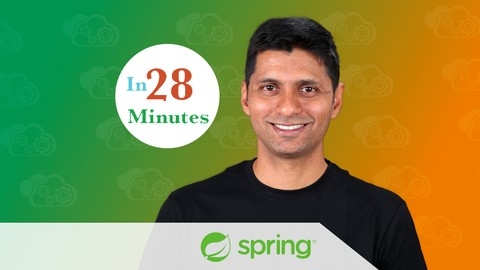

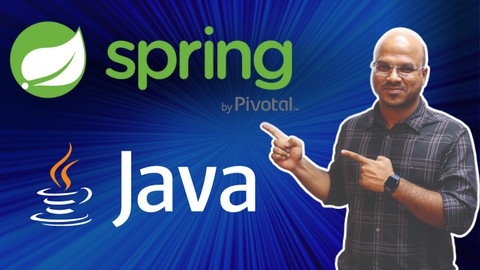
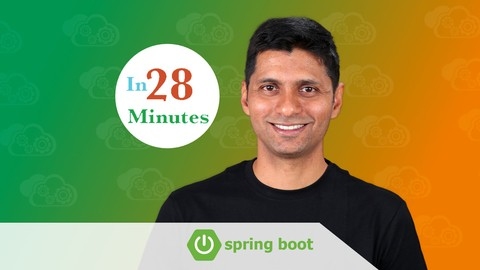
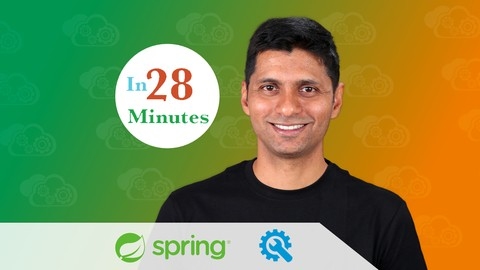

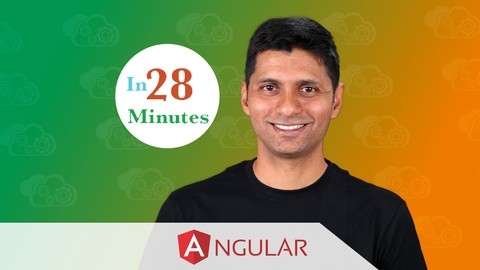
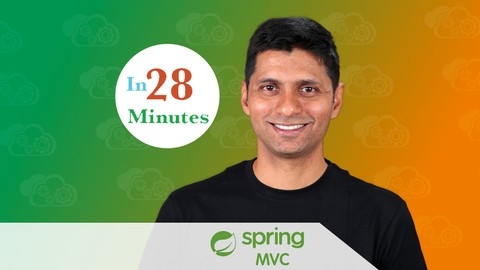
![[NEW] Master Spring Boot 3 & Spring Framework 6 with Java](/img/best-java-spring-courses-udemy/4993276_NEWMasterSpringBoot3SpringFramework6withJava.jpg)